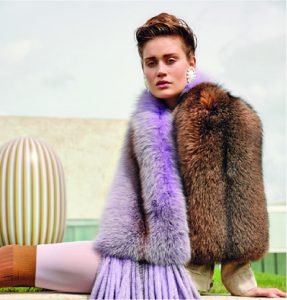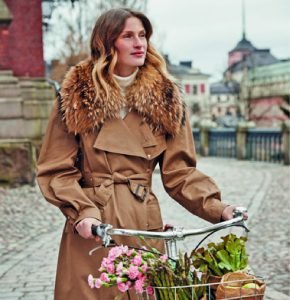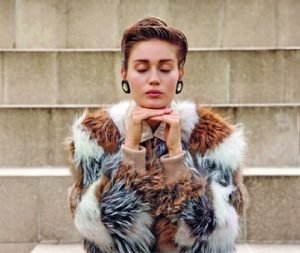Saga Furs has been innovating with fur since 1988 when it first opened the doors of its creative laboratory. Since then, hundreds of fur techniques have been developed to inspire designers, fashion editors, furriers, clothing manufacturers, students and others who influence fashion.
As the fashion industry steps up its search for the ultimate in sustainability, many of its leading lights are now radically re-evaluating their opinion of one the oldest raw materials of them all, fur. In 2019, according to a recent report, the production of both genuine and artificial fur increased by 120% to reach an aggregated value of $25 billion.
It was a remarkable turnaround, particularly for the mink and fox pelt industries, and the Finnish auction house Saga Furs can take much of the credit. Originally founded by the Finnish Fur Breeder’s Association in 1938, Saga Furs’ role has since evolved to industry flagship and an international brand in its own right. Thanks to innovations and willingness to develop, many brands and designers have been long-time partners of Saga Furs. For example, brands such as Romeo Hunte, LaQuan Smith and the LVMH Group, had fur on their spring/summer 2022 runways despite fur being usually associated with winter collections.

Saga Furs has been able to scale the giddy heights of haute couture fashion and rub shoulders with street wear brands by simultaneously supporting its supply chain and working hard to change the industry’s image. The company’s commitment to its farmers’ welfare was evident during the COVID-19 pandemic, when it made very clear that its future success relied as much on the long-term survival of its supply chain as it does on short-term changes in customer behaviour. “Our industry was hit very hard like many others, because the majority of luxury goods are sold to global travellers,” explains CEO Magnus Ljung. “The farmers who supply us suffered particularly badly, because they had to continue to take care of the animals even when there were limited revenues.”
Many farmers avoided difficult times thanks to the financial intervention not only of the banks but also of Saga Furs, which committed significant resources to help them through. “The most positive thing is that we all pulled together and have not just survived but bounced back.” Year on year, the value of brokerage sales tripled in the six months to April 2021 and Ljung predicts that the financial year 2020/2021 will exceed pre-pandemic levels.

That is good news for Saga Furs’ international network of farmers, today spread around 15 countries, as well as for the company and justifies the groundwork that has göne into the fur trade’s redemption. As the only global auction house in the business, Saga Furs has played a key role in promoting fur as a sustainable and natural option through its financial and hands-on investment for example in an international educational outreach programme.
In addition, Saga Furs has been developing Furmark, the industry-wide global certification programme. “Furmark is a certification system for natural fur with traceability that guarantees animal welfare and environmental standards along the supply chain, from farm to retail,” explains Ljung. “It also sets the benchmark for practices that the farmers must adhere to. Every pelt we sell has been approved in a third-party audited process that demonstrates scientifically that the animals have been well treated and have had a happy life.”
The company has also been pivotal in repositioning mink, fox and Finnraccoon furs as trendy materials that the likes of Rihanna and A$AP Rocky are happy to be seen in. Ljung and his colleagues are now busy cultivating the next generation of trend setters from its headquarters in the Helsinki area where the company regularly hosts groups of young designers to demonstrate the material’s versatility.

“There are a lot of innovative product development and techniques that we’ve created at Saga Furs. Today, fur means so much more than just a coat – it is being used in shoes, bags, scarves and other accessories,” says Ljung.
Ljung is almost evangelical about fur’s sustainable qualities. “It is just about the best material you can use,” he says. “There is no wastage, and fur is produced in a circular economic model where for example bio-gas is processed from the manure. Even the products themselves can be recycled and many people inherit garments from relatives and then have them remodelled. Not many other materials can claim to last that long. It is the most sustainable product as well one of the most functional, especially now that winter is coming.”









